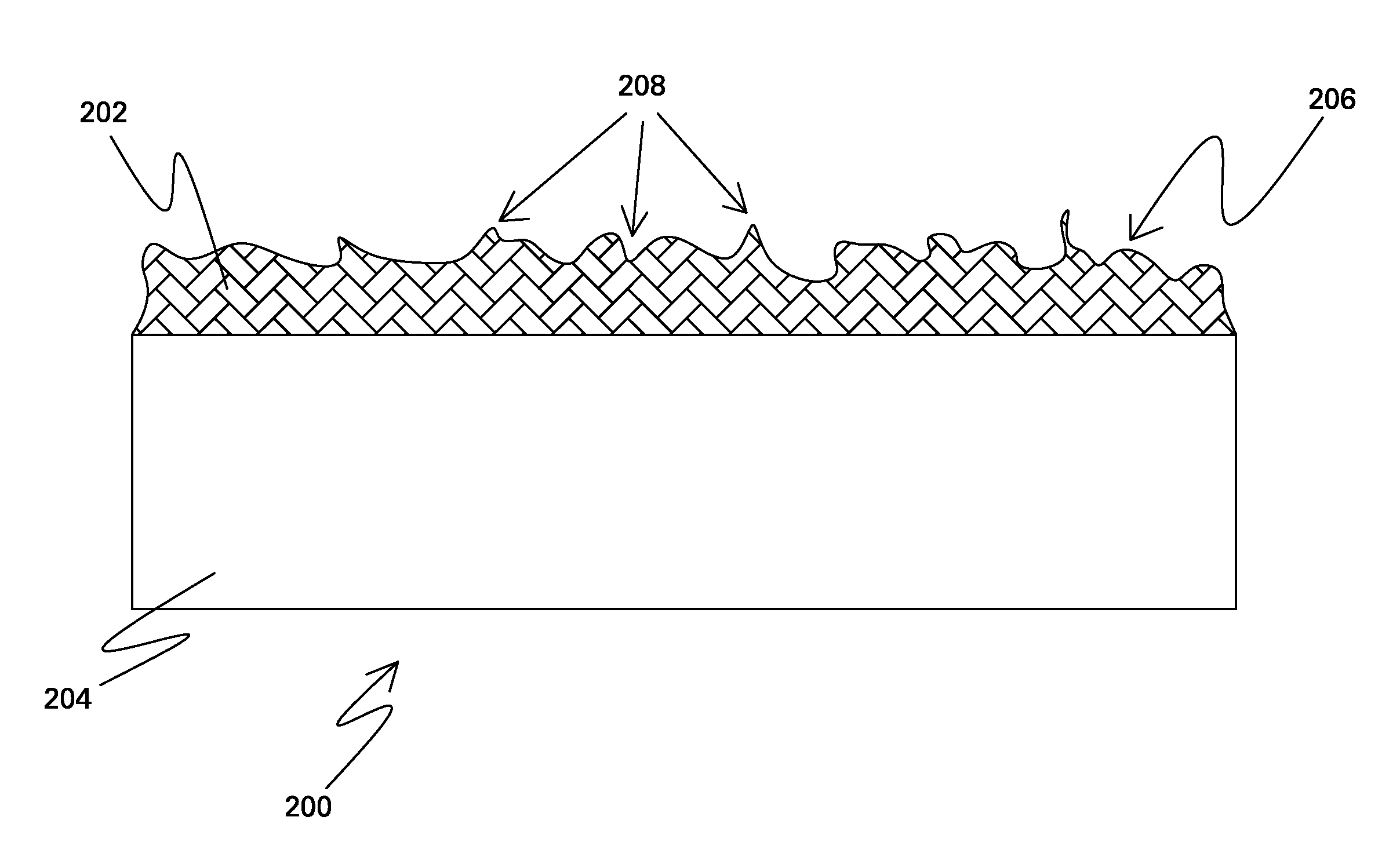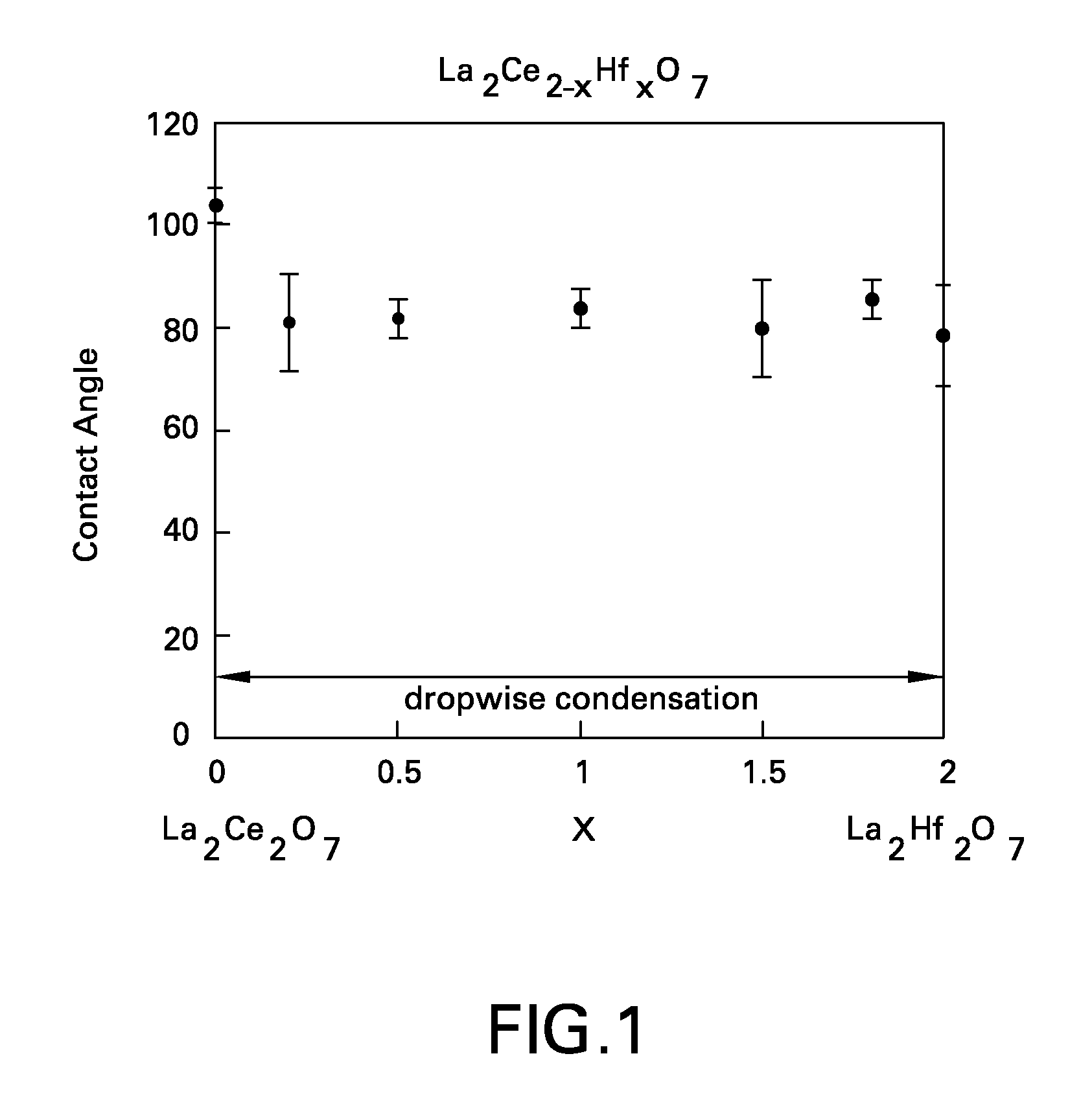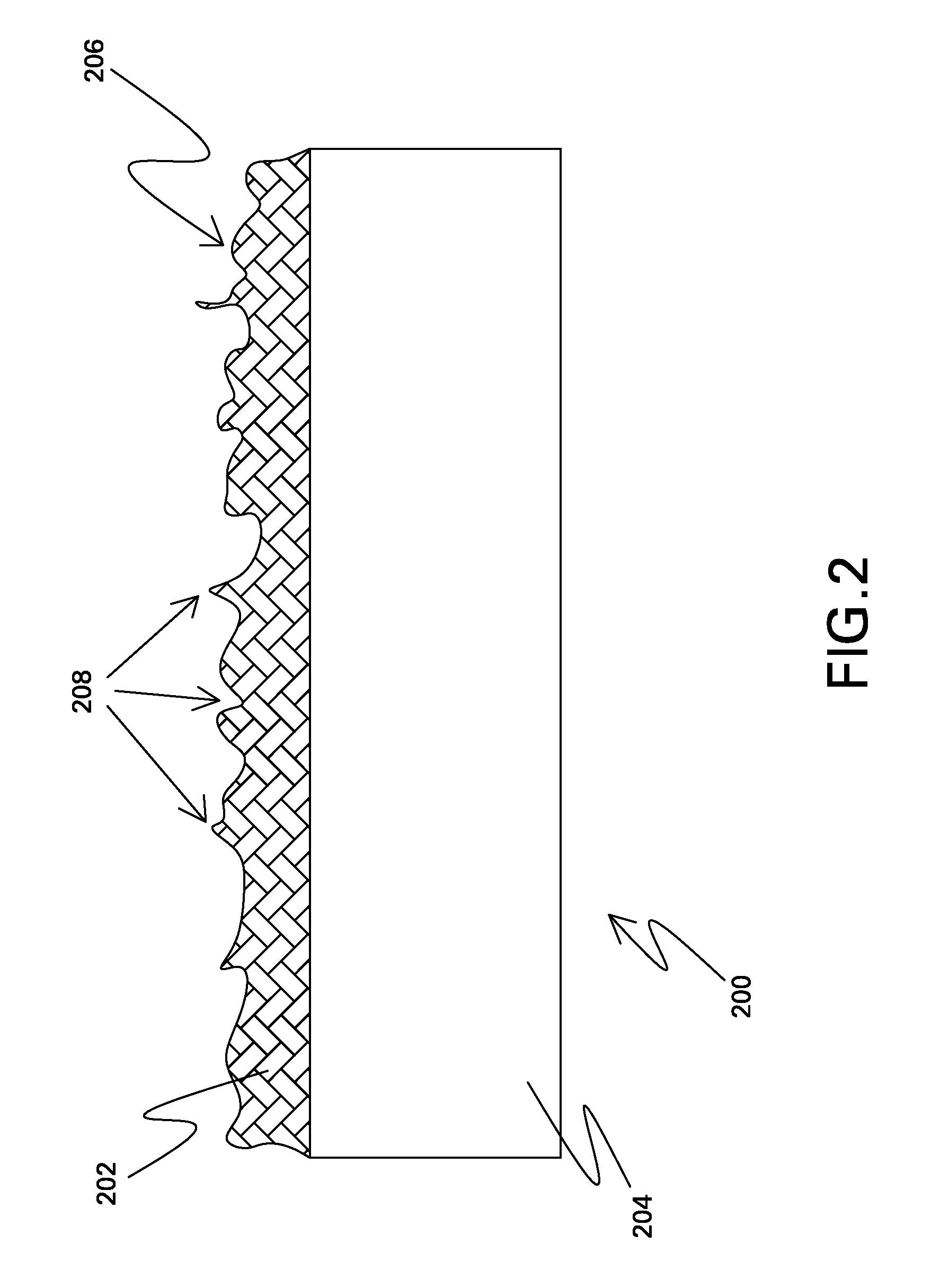Wetting resistant materials and articles made therewith
a technology of wet materials and articles, applied in the direction of vacuum evaporation coating, liquid fuel engine components, wind energy generation, etc., can solve the problems of high degree of “sheeting” of water over the solid surface, high heat transfer rate, and inability to use additives in many applications
- Summary
- Abstract
- Description
- Claims
- Application Information
AI Technical Summary
Benefits of technology
Problems solved by technology
Method used
Image
Examples
example
[0044]Without further elaboration, it is believed that one skilled in the art can, using the description herein, utilize the present invention to its fullest extent. The following example is included to provide additional guidance to those skilled in the art in practicing the claimed invention. The example provided is merely representative of the work that contributes to the teaching of the present application. Accordingly, this example is not intended to limit the invention, as defined in the appended claims, in any manner.
[0045]A coating in accordance with embodiments described herein was deposited on a commercially pure titanium substrate by radio frequency magnetron sputtering. The sputtering target was produced by pressing and sintering a mixture of primary oxide, here cerium oxide, and secondary oxide, here lanthanum oxide, where the molar ratio of primary oxide cations to the total cations present was about 0.5. A coating with a thickness of about 300 nm was produced using a ...
PUM
| Property | Measurement | Unit |
|---|---|---|
| molar ratio | aaaaa | aaaaa |
| molar ratio | aaaaa | aaaaa |
| molar ratio | aaaaa | aaaaa |
Abstract
Description
Claims
Application Information
 Login to View More
Login to View More - R&D
- Intellectual Property
- Life Sciences
- Materials
- Tech Scout
- Unparalleled Data Quality
- Higher Quality Content
- 60% Fewer Hallucinations
Browse by: Latest US Patents, China's latest patents, Technical Efficacy Thesaurus, Application Domain, Technology Topic, Popular Technical Reports.
© 2025 PatSnap. All rights reserved.Legal|Privacy policy|Modern Slavery Act Transparency Statement|Sitemap|About US| Contact US: help@patsnap.com



